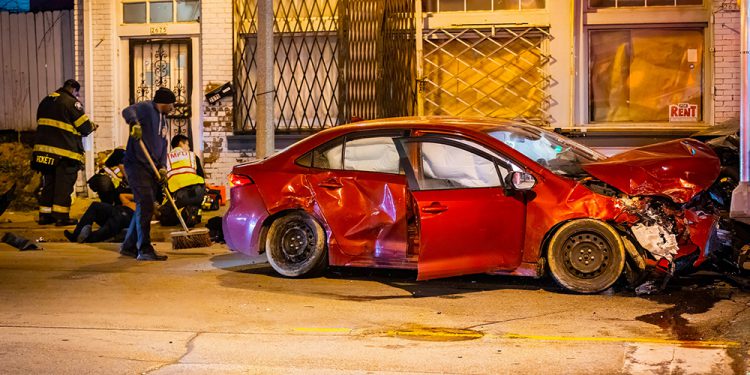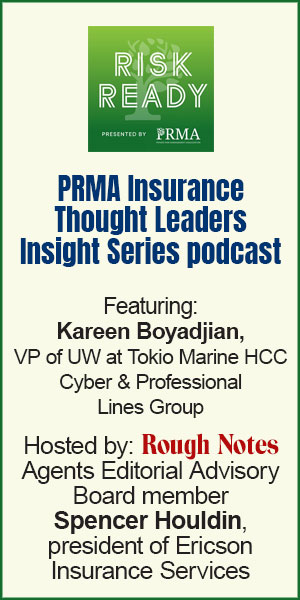A state supreme court decision
regarding UIM coverage is likely to please
producers and policyholder advocates but frustrate some carriers
In … states where UM/UIM coverage is mandatory, insurers may be hit by a double whammy:
The expectation to cover injury and damage caused by people who are inadequately insured,
and the expectation to extend that coverage to people who are not identified or rated for it.
By Joseph S. Harrington, CPCU
We all know that “coverage follows the car” in auto insurance, and we also know the exceptions to that maxim.
If a vehicle is loaned to a driver not listed on the policy, the liability and physical damage coverages provided under the vehicle’s policy apply in the event of an accident. The driver’s policy would apply only in excess of the vehicle’s policy limits, if at all. The principal exception comes in the case of a rental car, wherein the renter’s auto coverage is extended to the rented car.
Another basic feature of auto insurance is uninsured and underinsured motorist (UM/UIM) coverage, which refers to payments under an insured’s own auto policy for injuries and/or damage caused by another driver who is either uninsured or whose limits are insufficient to cover the losses. UM/UIM coverage is also tapped when an insured suffers damage and/or injury by a “hit and run” driver.
Okay, so nothing new so far. What’s not basic, or at least not very well understood, is whether UM/UIM coverage follows an insured when he or she is not in an insured vehicle.
“Owned but not insured”
In March 2025, the South Dakota Supreme Court handed down a decision regarding UIM coverage that is likely to please producers and policyholder advocates but frustrate carriers seeking to avoid unintended exposures. (UM coverage was not at issue in this case.)
In the case, a young motorist was struck and killed by a driver whose insurer consequently paid the full $25,000 liability limit on his policy. The insurer for the deceased woman’s vehicle subsequently paid most of its UIM limit, with an offset for the $25,000 paid by the insurer for the at-fault driver.
Apart from her own auto policy, however, the woman, who lived with her parents, was also an insured by definition under an auto policy for the parents’ two vehicles. As representatives of her estate, the parents sought UIM coverage under their own auto policy.
The insurer denied the claim on the basis of an exclusion stating there was no coverage for “bodily injury to any insured while occupying … a motor vehicle … not insured for this [UIM] coverage under this policy.”
Overturning precedent
Citing state supreme court precedent, the South Dakota district court ruled in favor of the insurer, which had argued that South Dakota law, which requires that UM/UIM coverage be included in auto policies, allowed for “reasonable exclusions” from UIM coverage.
In a lengthy ruling over a short provision and undisputed facts, the South Dakota Supreme Court overturned its own precedent to find UIM coverage under the parents’ auto policy. According to the justices, state law “mandate[s] UM and UIM coverage in every motor vehicle liability insurance policy and require[s] an insurer to pay UM and UIM benefits to any insured who has not fully recovered against an uninsured or underinsured driver.”
No room for “reasonable exclusions.” No enforcement of those found in the policy under consideration.
The supreme court acknowledged the problem its ruling might create for auto insurers. The opinion reads:
“It is possible that insurers may have priced their risks and structured their UIM policies based on our [previous] ruling … but [the insurer] has not made that argument and there is no claim that reversing [the precedent] will significantly impact their underwriting.”
Easy for them to say.
In South Dakota and other states where UM/UIM coverage is mandatory, insurers may be hit by a double whammy: The expectation to cover injury and damage caused by people who are inadequately insured, and the expectation to extend that coverage to people who are not identified or rated for it.
The author
Joseph S. Harrington, CPCU, is an independent business writer specializing in property and casualty insurance coverages and operations. For 21 years, Joe was the communications director for the American Association of Insurance Services (AAIS), a P&C advisory organization. Prior to that, Joe worked in journalism and as a reporter and editor in financial services.






